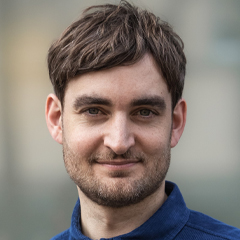Parenteral Packaging 2021: A Q&A with Conference Chairs

[Editor’s Note: The following is an interview conducted by PDA Europe staff with the Chairs of the 2021 PDA Parenteral Packaging Conference Planning Committee: Roman Mathaes, PhD, Lonza, and Galen Shi, PhD, Eli Lilly and Company.]
What are the major innovations and trends in the packaging ecosystem?
Primary packaging innovation has always followed and enabled trends in therapeutic modalities of pharmaceuticals. For example, cell and gene therapy (CGT) is offering the treatment of life-threatening disease. However, CGTs feature a unique target product profile demanding innovation in container closure system solutions and associated analytical test methods.
Cold storage and supply chain of sterile container closure systems remains a significant challenge for container closure integrity. Oligonucleotide delivery requires a deeper understanding of the compatibility of molecule, formulation matrix and container closure system and delivery device.
The regulatory landscape regarding pharmaceutical packaging is evolving fast. The introduction of closed system transfer devices left the pharmaceutical industry with several challenges. Finally, the COVID-19 pandemic helped foster a dialog on high volume and rapid packaging development between governmental organizations, packaging suppliers and the pharmaceutical industry. On top of the technical challenges, it is important to pay attention to user interface and patient needs for improved patient experience.
Can you see a paradigm shift regarding packaging development and commercialization during the COVID-19 pandemic?
The COVID-19 pandemic brought some specific challenges to parenteral packaging suppliers and the pharmaceutical industry.
At first, the concern and discussion focused on the world manufacturing capacity of suitable primary packaging components for a potential COVID-19 vaccine. This concern could be invalidated by some packaging supplier even when considering a vaccination campaign of the world population. The dialogue shifted to rapid packaging development and a discussion on suitable container closures for potential vaccine or antibody treatments with a focus on speed to market, cost efficiency and supply chain challenges in certain areas of the world. The flexibility and agility of product development including parenteral packaging become utmost important to COVID-19 treatment, while maintaining the traditional requirements and quality and safety. We expect the legacy of enhanced speed and efficiency in parenteral product development will remain even after COVID-19 pandemic.
How do you see the PDA packaging conference evolving from 2020 to 2021? Can you elaborate on the Conference theme Parenteral Packaging in a New Era: Convergence of Patient, Process and Product Needs?
The PDA packaging conference continues its evolution to discuss packaging development holistically in a bigger context of combination product, therapeutic environment, healthcare, and social responsibilities. In the past, packaging development was an isolated, silo activity within a pharmaceutical company, while nowadays packaging development has become a fully integrated part into pharmaceutical formulation development, analytical development, and manufacturing. All development activities have a focus on the patient, whether safety, efficacy, or experience. The 2021 theme is a natural evolution from the 2020 theme, “Interaction of Product, Package, and Process,” to stress the focus on patient needs and unique challenges associated with the new era ushered in by COVID-19.
At the PDA packaging conference, we connect suppliers, academia, regulatory authorities, and pharmaceutical companies. We have a diverse panel of speakers and moderators enabling a cross-functional dialog to share and set future industry best practices.
What are the technical focus areas and how does the new delivery modality (Cell and Gene therapies) dictate new packaging innovation?
The PDA packaging conference 2021 will discuss all current trends and hot topics in the packaging ecosystem: primary packaging solutions for CGTs, regulatory trends such as closed system transfer devices and combination products, drug-container closure-device interface compatibility. Additionally, we have invited Prof. Gustavo Barreto de Melo, Federal University of São Paulo, and Professor Buddy Rather, University of Washington, to foster the exchange between academia and the pharmaceutical industry and their suppliers.
What is your understanding of a patient centric packaging development strategy?
Patient-centric product design covers the whole gamut from drug substance, drug product, primary container closure, delivery device, label and packaging, which collectively shape up the user interface and patient experience. In particular, parenteral packaging should enable positive patient experiences, whether through different form factors to allow patient friendly design of delivery devices or facilitate dosing convenience and flexibility.
What will be the delivery mode of the conference in the given COVID situation?
The PDA 2021 Parenteral Packaging Conference, 27-29 April, will be an online event allowing remote presentations and participation. The digital conference platform will provide a broad spectrum of possibilities including live Q&A sessions, industry exhibition, poster sessions and networking opportunities.



 Roman Mathaes, PhD, Head of Pharmaceutical Services, Lonza Drug Product Services
Roman Mathaes, PhD, Head of Pharmaceutical Services, Lonza Drug Product Services  Galen Shi, PhD, Leader of Autoinjector Systems Engineering, Eli Lilly and Company
Galen Shi, PhD, Leader of Autoinjector Systems Engineering, Eli Lilly and Company